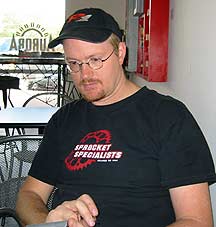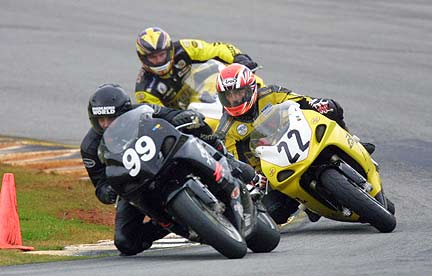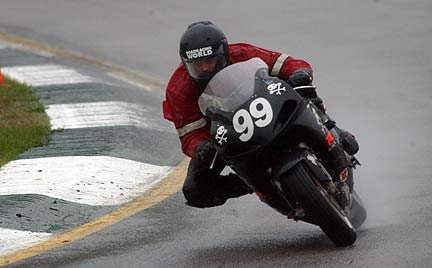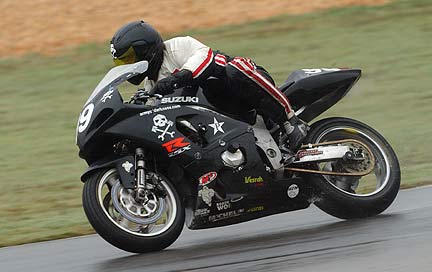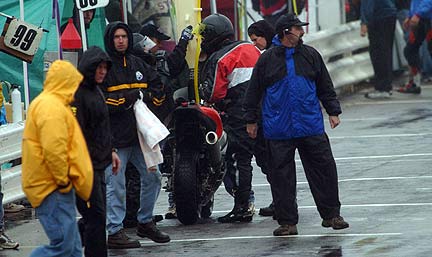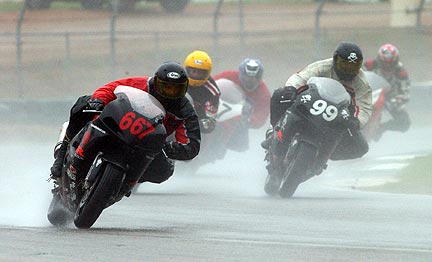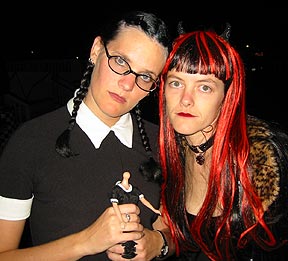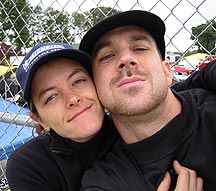2002 – Part Five
There are a number of different schools of philosophy which try to explain human nature and motivation. You’ve got your straight philosophical types which do the Hobbs and Locke argument about whether man is inherently evil and is kept in check by civilization or that man’s nature is basically good and society corrupts.
This sort of chicken-egg debate gets old pretty fast. The economists will weigh in and say that the whole good-bad debate is moot because people will act in whatever way best serves to maximize their "utility" (in non-economist terms, utility roughly translates to happiness or, in many cases, cash).
Whereas the desire for cash explains much of the daily routine of the world’s populace, some social scientists postulate that the desire for cash will take second tier to the desire for recognition. In other words, people will participate in activities which make no sense from a cash perspective but can be easily explained if a person’s primary motivation is not to make money, but to be celebrated for some talent or skill.
Most racing, of course, makes much more sense following this latter theory rather than the former.
The Sunday after the endurance race at Summit Point, due to the track’s proximity to our domicile, we attended the national sprint races to watch our teammates Mark Crozier and Jeff Walker in their respective races.
Both met with ill luck. Mark tangled with another rider and crashed in turn one Jeff DNFed one of his first races due to the infamous transmission bolt backing out. To his defense, the bolt had been installed a year prior with red thread-locking compound.
Jeff, a Novice-ranked rider, was turning lap times which were faster than most of the Experts but he now needed to borrow a bike to complete the rest of his events. His first option would have been to borrow one of Mark’s…but Mark’s 600 had been damaged in the turn-one crash.
We cracked open the trailer and unloaded the AOD spare bike.
Jeff’s bikes had been set up by GMD Computrack with reworked forks and shock. Our bikes had the forks reworked by Traxxion but the spring rates, geometry, ride height and assorted other settings had all been developed and refined by AOD. That process had led us to a set-up which was wildly different than pretty much any other 600 we had come across.
Although I was pleased to be in a position to lend Jeff our spare bike for his last race, I was a little nervous that, due to the radically different set-up, he would go slow, hate the bike, yell at me and/or crash it.
He effectively exorcised the crash demons by promptly knocking the bike over in his pits while swapping the tires and bodywork from his 600 to ours.
Melissa and I wandered down to the carousel to watch his race. His first complete lap was a half-second slower than his best previous time on his 600 and my heart sank a bit. However, his next lap was a half-second faster than his best on his 600, the next lap was a full second faster than on his 600 and his next was even faster, besting his fastest 750 time. This sort of learning curve continued to the end of the race.
Amazed at the times he had been turning, he continued to rave about the handling of our spare bike. Tim found this episode particularly rewarding. He had built a bike with a handling set-up which had been demonstrably superior to something done by the professionals. It was a nice bit of recognition for a geologist who is certainly not getting any financial rewards from all this.
Texas World Speedway
College Station, Texas
September 13-15, 2002
••••••••••••••••••••••••••••••••••••
Texas is a long way from Washington, DC. It takes us about 27 hours to drive from DC to College Station. Now it could be tempting to some readers to think that our familiarity with such travel would breed contempt or that somehow we travel such distances in a manner which reduces the arduous nature of the trip, but such beliefs would be unfounded and misguided: 1500 miles is a long drive.
A late-model van with a turbocharged diesel powerplant, a queen-size bed in the back, dual air conditioners and five drivers certainly removes some of the discomfort from such a trip but, given the fact that the racebike in the trailer was now fitted with our fourth motor iteration of the year, the long miles of interstate gave us all ample opportunity to contemplate the numerous ways this engine could fail as well.
I took the bike out in practice and spent the first session with the devil on my left shoulder whispering "fast break-in, fast bike" while the angel on my right counseled "those bearings are brand new, don’t go scuffing them now." With no signs of trouble we took turns hammering on the bike for the rest of the day.
With the sun sinking low in the sky Friday night, Tim informed me that he felt we should drop the oil pan on the engine to be sure the bearings had survived the break-in process intact. Tim and I have a strict, but unspoken, division of labor. With six hungry and tired people clustered around the van waiting to go eat and sleep and a mechanic who needs another hour with the bike, the tasks were quickly defined as:
Tim: Take apart bike, inspect, reassemble bike.
Sam: Mollify rest of team.
Tim calculates gear ratios versus
precipitation before race day.
Photo by AOD/MOI.
Coincidentally the Vesrah II team was going through a similar exercise with their 600 in the same garage, 75 meters to our west.
Tim found nothing in the oil pan to cause alarm, which did little to quell my mutinous team; the Vesrah crew apparently was not so fortunate and discovered that its 600 was not in a sufficient condition to contest the race the next day.
We arrived back at the track the next morning to find the Vesrah team members swapping the Ohlins forks and large gas tank from their usual endurance bike to one of their sprint bikes.
At the start of the race Vesrah’s Brian Stokes did an excellent job of sticking with our Mark Crozier. Whereas it had seemed that for most of the season we had enjoyed a small but noticeable horsepower advantage, the engine in the converted Vesrah II sprint bike seemed to be running stronger than the team’s usual endurance bike. After running nose-to-tail for 10 or 15 laps, Crozier was able to make some decisive moves through traffic and began to pull out half-a-second a lap. Just as I started to do the math to calculate the lead which Mark would hand off to Jim, Stokes lost 10 seconds in one lap.
On the next lap Stokes pulled the stricken Vesrah Suzuki into the pits. Apparently the nut securing the clutch basket to the transmission shaft had come loose, effectively ending the race for that engine. Shortly afterwards Neighbor of the Beast lost its third engine of the year. At one point I counted nine dead Suzukis along our half of the pit wall, ranging from SV650s to GSX-R1000s.
They were out of the race, and we only had to finish the race to clinch our fourth class Championship with one race to go. However, we couldn’t slack off the pace because now it was payback time for Bent Racing, which had beaten us at NFMP at the beginning of the year.
The Bent riders were running right with us on lap times but we were beating them a little on tire changes. We gave back our small lead when our fuel injection system threw an error code and tossed the bike into limp mode. Jim lost 15 seconds until he thought to reset the FI system by turning the bike off and then on again.
Bent crept a little ahead, but then dropped behind us when the team’s pit stop for a rear tire turned lengthy, because the team discovered that the bike required repairs to an exhaust hanger.
Jim Williams was out on our bike, Jim Bishop was out on the Bent bike. I went down to the Bent pits to see how Ty (Bent’s team captain) thought the race would play out. I pointed out that Bishop had been faster than Williams for the entire weekend. Ty countered that the Bent bike had a five-hour-old front tire on it. I parried by observing that our bike had a five-hour-old front as well. Ty checkmated me when he pointed out that, while the AOD bike had a five-hour-old Michelin, the Bent bike had a five-hour-old Dunlop. Ty’s suspicions proved accurate and Jim was able to sustain our 99-second lead to the checkered flag.
Third overall, first in class, fourth consecutive Middleweight Superbike Class Championship!
Grand National Finals
Road Atlanta
Braselton, Georgia
October 23-27, 2002
••••••••••••••••••••••••••••••••••••
Too bad it didn’t stay dry for the race. Photo by Vicki Sulpy.
The drive home from Texas was so long that we were still 600 miles from home when we called our sprint-racing teammates at the track to find out how they had done on Sunday.
The news was not welcome. Whereas Jeff Walker had been able to put his new suspension set-up to good use in his races, Mark Crozier had hit a false neutral in Texas World’s alarmingly-fast turn one and had crashed in a spectacular fashion. He had injured himself pretty thoroughly and, although he was upbeat about his chances of riding three weeks later at the GNF, we knew that there was no way he would be able to recover sufficiently in that time period.
While Melissa had to build yet another engine to replace the one she lost in Texas we at AOD were able to have a bit of a break and only changed the oil and gearing for Road Atlanta.
Arriving at the GNF we found that many teams had shaken things up a bit for the last race of the year. Vesrah II, having been ruled out of the Middleweight Superbike Class Championship in Texas, had switched to a second Heavyweight Superbike class entry.
One hour down, forty five minutes to go. Photo by Brian J Nelson.
The weather report looked dire for the endurance race at Road Atlanta. Although we were getting some periods of damp and dry during practice, the weather forecast was for four hours of rain on race day, which at the GNF was on Friday. Having already won the Championship our primary concern was to get the bike and ourselves through the last wet and treacherous four hours without tainting the bike or our leathers with the infamous orange Georgia clay.
I started the race in a foggy drizzle. Jim had bought the last fog-proof visor at the track and he wasn’t sharing. I could turn decent laps when I could see but often I had to take my left hand off the bar to crack the visor to try to clear my vision, only to find that the fog hanging over the track was so thick that clearing the visor only had limited efficacy. The reduced speeds meant uncharacteristically good fuel mileage for Road Atlanta. With water running into my boots and my gloves slowly dissolving on the bars I watched with some dismay while my pit board indicated the 90 scheduled minutes of my stint had passed, but with no indication of running out of fuel. Finally, at the 105-minute mark, I got a flashing fuel light and was just about to signal a pit stop to Tim when a red flag appeared. The cold and wet had cramped up my knees, back and arms so I was a bit relieved that the stint had ended by any means necessary.
Note the stream of water pouring out of the fairing lower drain
hole just in front of the rear tire. Photo by Brian J Nelson.
Nothing quite captures the romance of endurance racing like a pit
stop where everyone is wearing rain suits. Photo by Brian J Nelson.
In the pits I tried to tell Jim that the traction was surprisingly good but not as good as many tracks in the rain. I took the restart to complete one lap before pitting for fuel. Jim took the bike out and spent a few laps feeling out the traction before another red flag came out.
For the past three years we have joked in the pits about the possibility of the AOD and NOTB bikes taking each other out of the race. Melissa and I almost did it three years ago. I had been coaching her in practice to brake later for a particular turn. In the race I caught up to her near that part of the track and decided to make the pass on the brakes into that particular turn. She had, however, in the intervening laps, learned to brake decidedly later. Already committed to the pass, I slipped by her hopelessly late on the brakes with the rear wheel hopping and chattering, making an apex which was about 10 feet later than the one we customarily had been using. Fortunately our relative domestic tranquility was preserved because contact was avoided.
At the end of this race, the rest of which was uneventful for both teams, Jim recounted his first lap of the restart to the assembled teams.
NOTB’s (667) Jeff Walker makes the bump pass on AOD’s
Jim Williams (99) at the restart. Photo by Brian J Nelson.
"I was going in to turn one and all of a sudden I couldn’t turn because someone was running into me on the right. I kept trying to push the bike down but couldn’t and this idiot pushed me wide to the edge of the track and about 15 bikes went by."
Jeff Walker, who had taken the restart for NOTB, began to uncharacteristically shuffle his feet, then said "Uh, Jim? Sorry about that."
RW contributor and Siren’s Endurance Racer Beth
Wyse impersonates Wednesday Addams while RW
website editor and Neighbor of the Beast racer Melissa
Berkoff dons her AOD cheerleader outfit for the WERA
GNF Halloween Party. Photo AOD/MOI.
The Plan For 2003
•••••••••••••••••••••••••••••••••••
In the following months after the GNF Jim Williams reached a very difficult decision to retire from road racing. Army of Darkness was originally founded in 1993. With Jim’s retirement the only original members left on active service are Tim Gooding and myself. However, like an aging rock band that doesn’t know when to call it quits, we are reforming for yet another national tour in 2003. The core team will be Mark Crozier (rumors of his retirement have been greatly exaggerated), Jeff Walker (he can’t run into our bike if he is riding it), Tim Gooding (hard at work building an even better GSX-R600) and myself.
Melissa’s mental health could not withstand a single additional mechanical failure on a Suzuki (at last count she had eight or nine over the season) and she has elected to compete on YZF-R6 Yamahas in 2003. She will be joined by her long-standing teammate Scott Fisher and endurance rookie Roman "Ice" Kilgore.
With the season opener at Jennings GP at the end of March we have scheduled our pre-season Michelin tire test date for mid-March. Melissa could not even take delivery of her two new bikes until mid-February, leaving only five weeks to completely prep two motorcycles from soup to nuts. With four racebikes from two manufacturers equally distributed across all available surfaces, if you thought the garage picture from two issues ago depicted a chaotic environment, you should see it now.
Your correspondents: NOTB’s Melissa Berkoff
and AOD’s Sam Fleming. Photo AOD/MOI.

